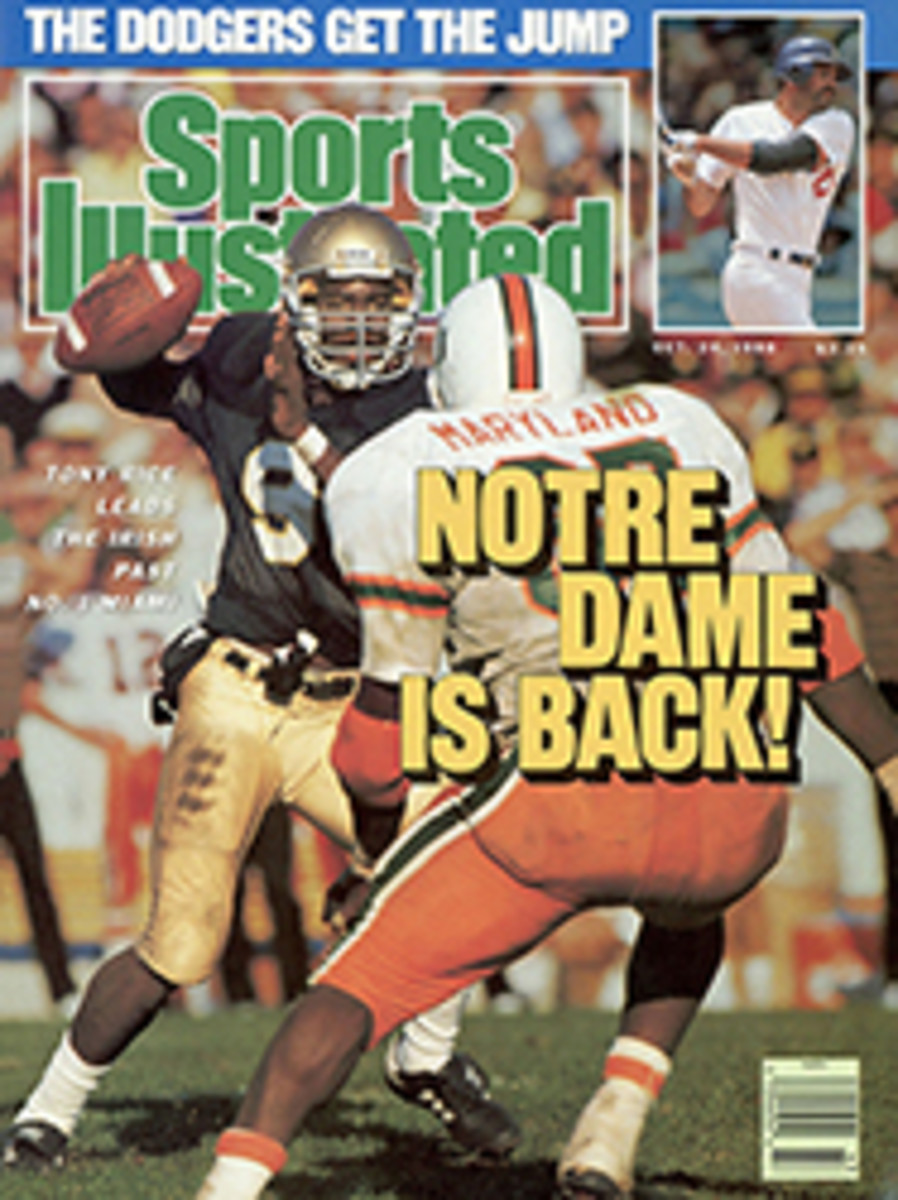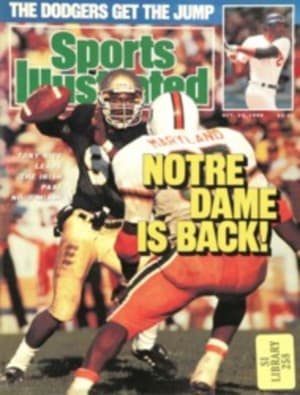
Letters
THE USOC
As the father of four children who are or have been on U.S. national teams in three sports (gymnastics, speed skating and figure skating) and one 1988 Olympian, bronze medal gymnast Phoebe Mills, I read An Olympian Quagmire (Sept. 12) by E.M. Swift and Robert Sullivan with considerable interest. In my experience, the two biggest problems with the U.S. Olympic Committee and with amateur sports in this country are the size of the governing bodies and the lack of accountability for the way money is spent.
One solution would be for Congress to amend the Amateur Sports Act of 1978 to include the $215 million grant and the $83 million annual allocation that were originally proposed but never adopted, making the allocation of the money contingent on 1) the elimination of the USOC's House of Delegates in its present form and 2) a reduction in the size of the Executive Board.
Another problem of the USOC bureaucracy is the advanced age of many members of both the House of Delegates and the Executive Board. The older those involved in amateur sports are, the less interested they seem to be in the athletes and the more preoccupied they become with the perks of office. I have overheard officials of more than one sport, while engaged in conversation about an upcoming national team's trip abroad, express more interest in the sights they were going to see than in the athletic competition that was the purpose of the trip. The solution to this problem is twofold: The proportion of athlete-members of the USOC's governing body should be increased to at least two-thirds of all members, and there should be a mandatory retirement age of 40 for every person in a policy-making position. This would ensure a constant infusion of new blood and a concentration on the athletes themselves.
A substantial reduction in the size of the USOC's governing body would make more money available for use where it is really needed—for coaching, facilities and direct grants to elite athletes for training and living expenses. There should also be a requirement that each sport's governing body spend, at the minimum, a certain percent (say, 50%) of the money it receives annually from the USOC on coaching, facilities and direct aid to athletes.
The only way to implement these changes is through additional federal legislation that increases funding for amateur sports contingent upon reform of the USOC.
CHRISTOPHER A. MILLS
Northfield, Ill.
The Olympic Training Center on the campus of Northern Michigan University at Marquette is probably the best investment the USOC ever made. While the USOC annually spends approximately $50,000 on the center, the state of Michigan pours some $600,000 a year into it for operating costs. The state's ongoing interest in the facility is further illustrated by the construction of a new sports complex at Northern Michigan. Olympic training programs will share this complex with Northern Michigan students, and contrary to what the article implied, it is the state—not the USOC—that will be picking up the $22 million tab. Moreover, because the center is on a college campus, athletes in training who wish to pursue their education can do so at minimal cost.
ROBERT W. DAVIS
U.S. Representative, Michigan
Washington, D.C.
We take exception to the comments about the New York State Olympic Regional Development Authority. The authority is very proud of its accomplishments at Lake Placid, having expended more than $25 million over the past six years improving the 1980 Olympic facilities. Improvements include such major additions as plastic matting on three ski jumping hills, which opens the slopes to summer and fall training, a chair lift at the Olympic ski jumping complex and a $2.5 million training facility for the U.S. freestyle ski team.
We have also hosted dozens of major international events that have provided American athletes with an opportunity to compete on their home turf. And now, because the USOC, with whom we have a contract to provide a full complement of winter training facilities, has been unable to locate adequate places for housing, dining and indoor training, the authority and the state of New York are constructing a $12 million center so that Olympic hopefuls will have a new gymnasium and first-class dining and housing accommodations.
Overall, with the efforts made by the authority and the USOC, the training situation in Lake Placid is excellent and getting better.
NED HARKNESS
President/Chief Executive Officer
Olympic Regional Development Authority
Lake Placid, N.Y.
HOCKEY VIOLENCE
Three cheers for Judge Sidney Harris and the city of Toronto (North Star on Ice, Sept. 5). It's about time an NHL player was penalized in a courtroom for unlawful actions on the ice. The slaps on the wrist handed down by the NHL have not been enough. Dino Ciccarelli got off easy, serving only two hours in jail, but the important thing is that a city has made a point. I hope other cities will also show the NHL that a hockey rink is not in a jurisdiction of its own.
WILLIAM J. KERIVAN III
Millis, Mass.
I have been a prosecutor for 14½ years, and I have often remarked that it's a good thing that a professional hockey arena isn't located within my jurisdiction (Ashland County, Ohio). If one were, the court would be flooded with charges of assault and disorderly conduct as a result of the actions of the players. Week in and week out, we prosecute people for engaging in conduct of a similar—and sometimes less serious—nature as that seen in hockey arenas. The sport of hockey is not above the law, nor is any other sport. Austin Murphy says, "Hundreds of ugly, violent altercations break out in NHL games every season. Which ones merit police action?" The answer is: All of them!
RICHARD P. WOLFE II
Director of Law
Ashland, Ohio
Come off it. SI decries violence yet fills its pages with it. Stop the hypocrisy and start giving hockey the coverage it deserves. There is no other sport with the beauty, grace, violence, speed and daring of hockey. Cover it that way, and get rid of the sissy apologists who write your hockey articles.
ROBERT B. DOWNES
Fairbanks, Alaska
As Dino Ciccarelli's agent, I object to statements in SCORECARD (Sept. 5). First, we were not renegotiating his contract; we were negotiating a new contract. Second, your statement that Dino earned $400,000 a year is inaccurate. He didn't even earn half of that figure last season.
RON SALCER
Marina del Rey, Calif.
UNDERSTANDING B.D.
I thoroughly enjoyed the article by Frank Deford on Brian Dowling (The Man Called B.D., Sept. 5). It made me remember how important Dowling was, and still is, to many Cleveland-area residents. It also helped me to recall the first time I appreciated my oldest sister.
While attending St. Ann's grade school (Dowling's alma mater) in Cleveland Heights in the late 1960s, my classmates and my brother and I followed Dowling's college career worshipfully but, alas, from afar. (My family and I had hoped he would choose to attend a university that was closer to home—my father's alma mater, Notre Dame, say.) Dowling closed the distance in '68, when he escorted my oldest sister, Camilla, to the Cleveland Bachelor Ball on New Year's Eve. For the first time in my life, I thanked God for Camilla's good looks. My brother and I didn't meet Brian that night—we were so overcome by excitement and a case of nerves that when he arrived we went scrambling into the TV room. We assured ourselves that we would meet him later, after his and Camilla's relationship blossomed. However, they never dated again.
Camilla remembers wearing "a long, black crepe evening gown with a rhinestone pin" that night, but she still doesn't understand what was so extraordinary about Brian Dowling. Thanks for reminding me.
BRIAN G. BURBY
Portland, Ore.
Brian Dowling and I played intramural softball for Berkeley College at Yale. I've never seen a better softball player. One day I broke my leg sliding into third base, and I spent several nights in the infirmary. Although Brian and I were barely acquaintances, he was the only member of the team who came to visit me (he gave me a few pointers on the use of crutches). I've always been impressed that the "god" who played quarterback was such a nice, regular guy.
LAWRENCE WASSER, M.D.
Yale '70
Louisville
SPORTSMAN
It was 19 years ago that the NBA last had a repeat champion, so come late December, I expect to see the Los Angeles Lakers on your cover as 1988 Sportsmen of the Year.
Steffi Graf, winner of tennis's Grand Slam and an Olympic gold medal, should share the cover as Sportswoman of the Year.
ADAM J. DAVIDSON
Lexington, Ky.
HEADSTRONG
I wish Hall of Famer Guy Lafleur (right) nothing but success in his comeback with the New York Rangers (The Late-Blooming Flower, Sept. 26), but apparently his four-year layoff has left him no wiser concerning the dangers of helmetless play in the NHL. It is unfortunate that Lafleur, who is exempt from the rule requiring helmets because he was an NHL player before it went into effect in 1979, is allowed to endanger more than just his career. It is even more unfortunate that he chooses to exercise that privilege.
WILLIAM X. BARRON
Canaan, N.H.
PHOTO
LANE STEWART
Chris Mills (left), with family—including Olympic gymnast Phoebe (fifth from left)—offers his ideas on the USOC.
PHOTO
DAVID E. KLUTHO
Letters to SPORTS ILLUSTRATED should include the name, address and home telephone number of the writer and should be addressed to The Editor, SPORTS ILLUSTRATED, Time & Life Building, Rockefeller Center, New York, N.Y. 10020-1393.

